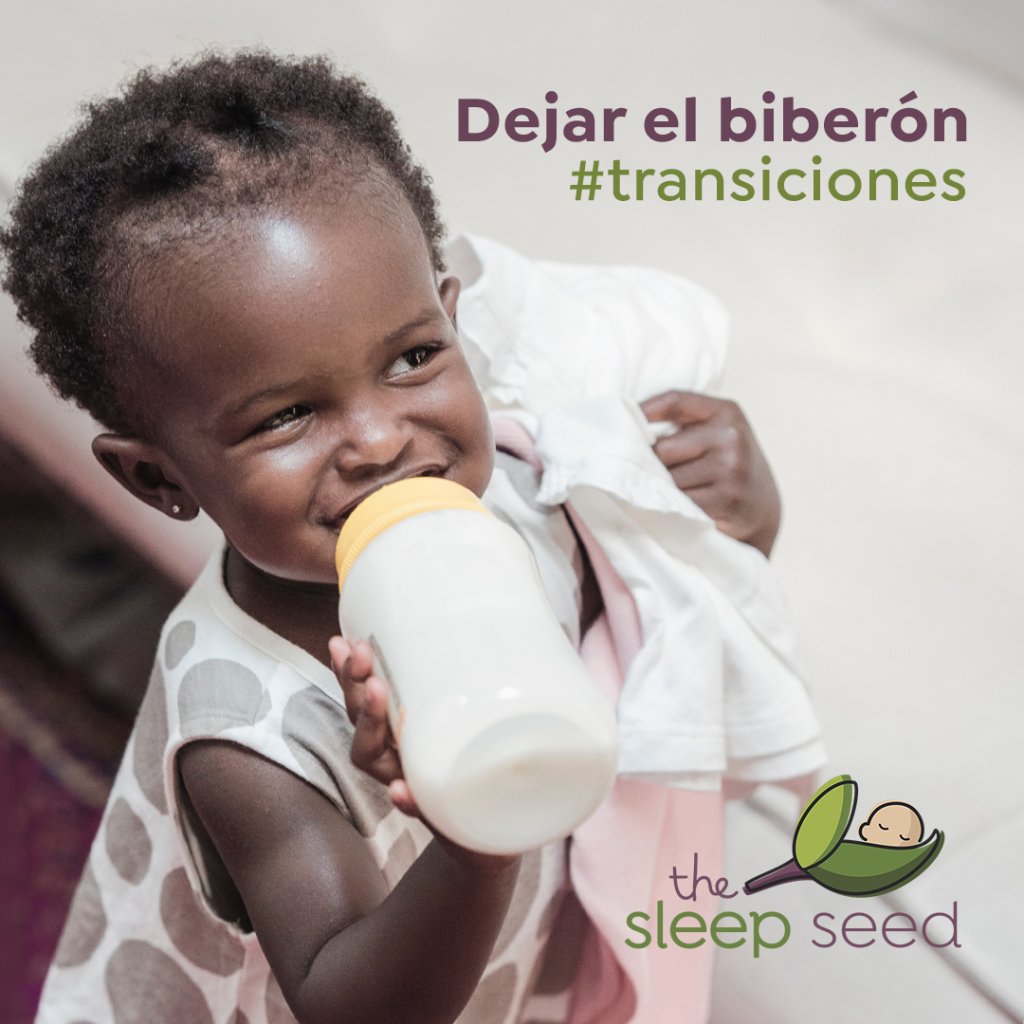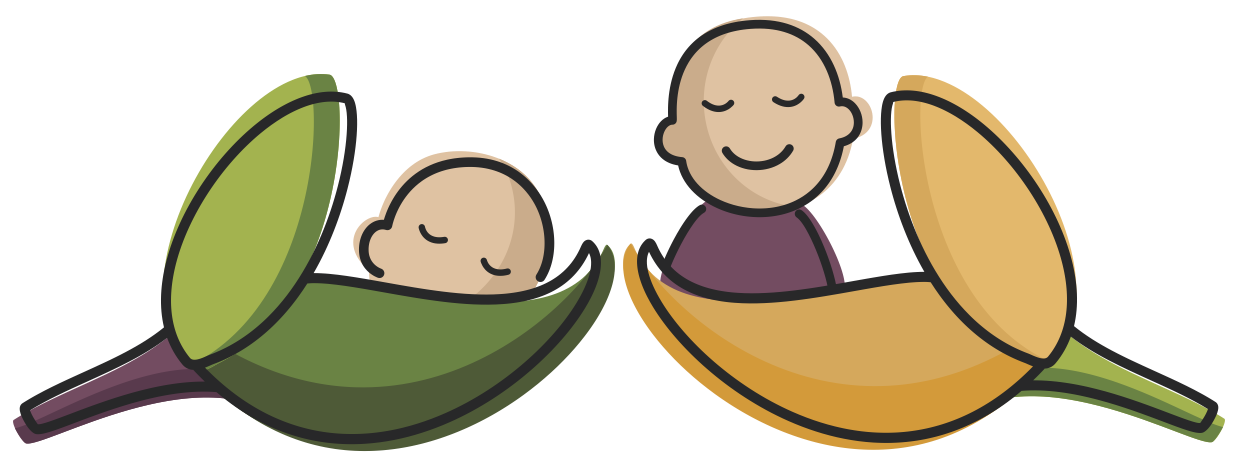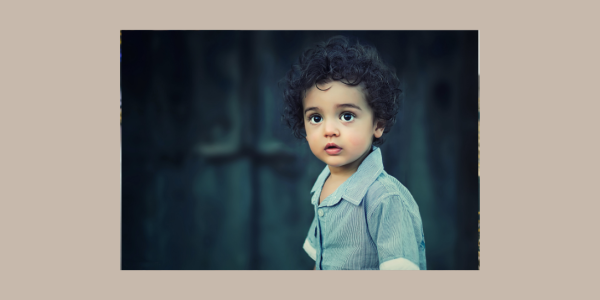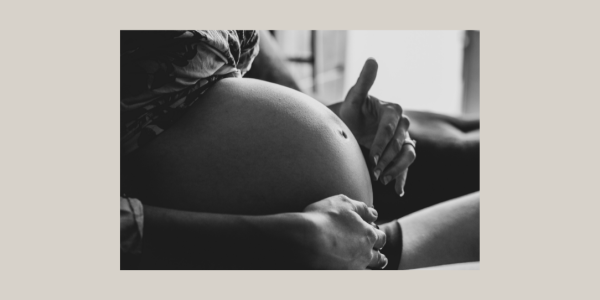
Aunque parezca difícil decirle adiós al biberón, ya que reconforta a tu bebé y a ti te facilita las cosas, es importante comenzar el proceso en algún momento después del primer cumpleaños de tu bebé, con el objetivo de quitarlo por completo antes de los 15 meses.
Estas son las razones:
• Es más probable que se encariñen con las cosas entre los 15 y los 18 meses. Oscilan entre el gozo que les da su independencia y la necesidad de aún aferrarse a ti. Un niño de esta edad puede explorar a poca distancia de su mamá o papá, pero hay ocasiones en las que querrá permanecer cerca, especialmente si está cansado, enfermo o asustado. Y no solo buscará la seguridad de tu regazo, sino que también se aferrará a un objeto familiar y reconfortante, como su biberón, si aún no lo ha abandonado. Un niño que todavía está apegado a un biberón solo se aferrará con más fuerza si se le permite tenerlo como una fuente de consuelo durante este período crítico. Es mejor fomentar otros accesorios, como una manta, un animal de peluche o un juguete como objeto de transición.
• Sus dientes pueden verse muy afectados si es que dejas que tu hijo camine con el biberón, beba entre las comidas y los snacks, o lo tome a la hora de acostarse sin cepillarse los dientes antes de quedarse dormido. La leche está llena de azúcares que pueden adherirse a los dientes y causar caries (que en última instancia también pueden afectar sus dientes de adulto). Es incluso peor si bebe jugo en el biberón. Sería equivalente a darle una caja de galletas para comer durante todo el día. Darle un biberón a un niño pequeño a la hora de acostarse y dejar que se duerma antes de que le cepilles los dientes es una invitación segura a las caries. He trabajado con familias cuyos hijos han desarrollado caries desde los 18 meses porque se iban a dormir constantemente con leche en sus dientes. Del mismo modo, he visto niños de hasta 5 años con caries por la misma razón, ya que todavía tomaban biberón antes de acostarse o incluso que sus dientes fijos les salgan negros, porque están llenos de caries.
• Afectará su apetito. Es más fácil que los bebés mayores de 12 meses, se llenen de leche si la toman del biberón. Por ejemplo, es poco probable que los que están acostumbrados a tomar un biberón de 6 u 8 onzas a primera hora de la mañana desayunen bien. A esta edad ellos pueden beber más rápido de un biberón que de un vasito, por lo que es aún más fácil que se llenen rápido. Recuerda que a esta edad necesitan otros alimentos además de la leche para nutrirse. Si te preocupa que por falta de leche tu hijo no obtenga suficiente calcio, habla con tu pediatra y ofrece la cantidad que requiere tu bebé en un vasito.
• Un biberón es una muleta innecesaria a la hora de dormir. Es vital enseñarles a conciliar el sueño de manera independiente, sin necesidad de ser amamantados, ser mecidos, o que dependan de un biberón para poder conciliar el sueño. Además de eso, al año, un niño debería poder dormir toda la noche fácilmente sin necesidad de “rellenar” su panza.
Cómo quitar el biberón:
1. Introduce una taza o vaso si aún no lo has hecho. Idealmente, le habrás estado dando a tu bebé sorbos de leche o agua en una taza o vaso entre los 6 y los 9 meses, pero si no es así, comienza por probar a darle en diferentes tipos de tazas o vasos, hasta que encuentres uno que le guste. (Algunos niños prefieren los vasos para sorber de inmediato, otros prefieren de popote; a algunos no les importa qué tipo de vaso sea, siempre que sea azul o verde, o tenga perros o princesas). Muchas veces es cuestión de probar y practicar mucho para que se acostumbre y no tanto de estar cambiando de un tipo a otro.
2. Primero elimina el biberón del almuerzo, la comida es el momento en el que probablemente el biberón es menos importante para ellos. En su lugar, sírvele la leche en su taza o vaso.
3. Luego quita el biberón de la cena. Hazlo una vez que se haya acostumbrado a tomar de una taza o vaso, en el almuerzo, alrededor de cuatro a siete días después (observa qué tan fácil o difícil se le hace).
4. Alrededor de cuatro a siete días después, el biberón de la mañana. En lugar de darle un biberón tan pronto como se levante, vaya directamente a la mesa para desayunar.
5. Finalmente, el biberón antes de dormir. Si tu bebé tiene una buena cena (que no es tanta comida como tú crees), no necesita leche extra para pasar la noche. Incluso es posible que puedas simplemente omitir el biberón en este punto, ya que se ha acostumbrado a prescindir de él durante el día, pero si hace un escándalo, adopta un enfoque gradual: comienza a reducir la cantidad de leche que pones en su biberón a la hora de dormirse, al menos dos onzas cada dos días. Cuando llegues a la marca de tres onzas, ofrécele una taza de agua en lugar de un biberón durante su rutina antes de dormir (leer, cantar, abrazar). Si estás convencida de que tu bebé debe tomar leche antes de dormirse, ofrece la leche en una taza y cepíllale los dientes antes de irse a dormir.
Nota: Tan pronto como tu bebé deje el biberón, tira todos y cada uno de los que hay en tu casa (incluso los repuestos que tienes en la bolsa de pañales y en el carro). No quieres que tu hijo descubra un biberón y exija que se lo llenen (¡puede suceder meses después!), Ni quieres recurrir a un biberón en un momento de desesperación para calmar un berrinche o hacer que tu bebé vuelva a dormir a las 4 am
¡Oops! ¿Tu hijo está demasiado apegado a su biberón?
Supongamos que se te pasó la marca de los 15 meses y sospechas que tu toddler (¡o incluso niño de preescolar!) Ha desarrollado un vínculo emocional con su biberón. Así es cómo puedes saberlo:
- Su biberón es claramente su objeto de seguridad, o cariño
- Lo quiere cuando está cansado, sobreestimulado o ansioso, e incluso puede quejarse o hacer un berrinche para conseguirlo
- Exige una determinada bebida y una cierta cantidad
- Lo necesita para conciliar el sueño.
- Lo lleva consigo durante el día a todas partes
Para ayudar a un niño que muestra uno o varios de esos puntos, sigue estos pasos:
1. Avísale con tiempo. Hazle saber con tres a cinco días de anticipación que ya es hora de dejar el biberón. Díselo todos los días, al menos dos veces al día, pero elige un momento en el que no esté cansado o a punto de irse a dormir. Habla con tranquilidad, con cariño, confianza y tono positivo
2. Durante el período previo al GRAN día, comienza a minimizar la cantidad de biberones que tiene durante el día y a reducir la cantidad de líquido en cada uno. A algunos padres les gusta restringir el biberón a la hora de la siesta y la hora de acostarse, o lo permiten solo en ciertas habitaciones. Cuando esté en un “estado de ánimo” de biberón, distráelo con un juego u ofrece otra forma de consuelo.
3. Con anticipación, recoge los biberones que estén esparcidos por la casa (a tu hijo le gustará ayudar a hacer esto) y deja de almacenar biberones precargados en el refrigerador.
4. A algunos padres les gusta contar historias sobre cómo van a regalar los biberones a los bebés en el hospital o un centro de reciclaje. Está bien, pero aún así debes decírselo a tu hijo con anticipación.
5. En el GRAN día, saca “oficialmente” todos los biberones de la casa. Dile a tu hijo lo que estás haciendo y recuérdale que han estado hablando de esto durante varios días. Mantente firme y no te rindas, incluso si llora o hace un berrinche, pero al mismo tiempo dale consuelo y cariño.
6. No te sorprendas si todo va bien durante unos días y luego tu hijo pasa por una mala racha y pide un biberón. Recuérdale gentilmente que no hay más biberones y ofrécele un beso y un abrazo en su lugar.
Info por “the sleep lady”

Though as it might seem to say bye-bye to the bottle for both of you (it comforts him, it makes things easy for you), it’s important to start the process sometime after your child’s first birthday, with the goal of having them completely weaned by 15 months.
Here’s why:
• Toddlers are more likely to get attached to things between 15 and 18 months. They swing back and forth between flouting their independence and clinging to you. A child this age can now explore at a short distance from mom or dad, but there are times when they’ll want to stay nearby, especially if they are tired, sick, or scared. And not only will they seek the safety of your lap, but they may also hang on for dear life to a familiar and comforting object—like their bottle if they haven’t already given it up. A toddler who’s still attached to a bottle will only latch on tighter if they are allowed to have it as a source of comfort during this critical period. It’s better to encourage other attachments, such as a blanket, stuffed animal, or toy.
• His budding pearly whites are at stake. This is especially true if you let your child walk around with their bottle, drink from it between meals and snacks, or have it at bedtime without brushing their teeth before they nod off: Healthy as it is, milk is full of sugars that can cling to budding teeth and cause decay (which can ultimately affect adult teeth as well). It’s even worse if they are drinking juice from a bottle. You might as well hand him a box of cookies to snack on all day long! Giving a bottle to a toddler at bedtime and letting them fall asleep before you brush their teeth is an invitation to decay: I’ve worked with many families whose children have developed cavities as young as 18 months because they consistently went to sleep with milk on their teeth; likewise, I’ve seen kids as old as 5 with cavities for the same reason: they were still taking a bottle before bed.
• It’ll ruin their appetite. Many children over 12 months will fill up on milk if they take it from a bottle. For example, toddlers who’re used to sucking down a 6- or 8-ounce bottle first thing in the morning aren’t likely to eat much breakfast. But at this age, they need other foods besides milk to be nourished. Kids can also literally drink faster from a bottle than from a sippy cup, making it even easier to fill up. (If you’re worried that without a bottle your child isn’t getting enough calcium, speak to your pediatrician).
• A bottle can be an unnecessary crutch at bedtime. A primary rule of encouraging healthy sleep habits bears repeating: it’s vital to teach them to drop off by themselves, without needing to nurse, say, or be rocked—and you certainly don’t want them to rely on sucking on a bottle in order to get to sleep. Besides that, by a year a child should be able to sleep through the night easily without needing to “top off” their belly.
How to wean:
1. Introduce a cup, if you haven’t already. Ideally, you’ll have been giving your baby sips of milk from a cup by 6 to 9 months, but if not, start giving them different kinds until you find one they like. (Some kids take to sippy cups right away, others prefer flip-up straws; some don’t care what kind of cup it is as long as it’s blue, or green, or has puppies or princesses on it.)
2. Eliminate the bottle, starting with lunch, the meal at which the bottle is probably least important to them. Instead, serve their milk in their now- favourite cup.
3. Take away the dinner bottle—once they are used to having a cup at lunch, after around four to seven days (follow their cues).
4. Next, tackle the morning bottle. Instead of handing your toddler a bottle as soon as they get up, go right to the table for breakfast.
5. Finally, let the bedtime bottle go. As long as your child has had a good dinner (which is not as much food as you might think), they don’t need extra milk to make it through the night. You may even be able to just skip the bottle at this point since they have gotten used to doing without it during the day, but if they put up a fuss, take a graduated approach: begin to reduce the amount of milk in the bedtime bottle by at least two ounces every two days. When you reach the three-ounce mark, offer a cup of water instead of a bottle during their bedtime routine (reading, singing, cuddling). If you’re convinced that your baby has to have milk before bed, then work toward serving that milk in a cup, and brushing their teeth before they go to sleep.
Note: As soon as your baby is weaned from the bottle, throw away every single one in the house (even the spares you keep tucked in the diaper bag and car). You don’t want your child to discover a left-over bottle and demand a fill-up (it can happen months later!), nor do you want to turn to a bottle out of desperation to calm a tantrum or get a baby to go back to sleep at 4 a.m.
Oops! Is your child too attached to the bottle?
Let’s say you missed the 15-month mark and suspect your older toddler (or preschooler!) has developed an emotional attachment to their bottle. Here’s how you can tell:
• Their bottle is clearly their security object or lovey.
• They want it when they are tired, overstimulated, or anxious, and may even whine or throw a tantrum in order to get it.
• They demand a certain beverage in it and a certain amount
• They need it to fall asleep.
• They carry it around during the day
To help a child who fits this description break their bottle habit, follow these steps:
1. Give them a fair warning. Let them know three to five days in advance that it’s about time to give up the bottle. Tell them every day, at least twice a day, but pick a time when they are not tired or about to go to sleep. Be calm, caring, confident, and positive.
2. During the period leading up to D-day, start minimizing the number of bottles they have during the day and reducing the amount of liquid in each. Some parents like to restrict the bottle to naptime and bedtime or allow it only in certain rooms. When they are in a bottle “mood,” distract them with a game or offer them another form of comfort.
3. Also beforehand, gather up any bottles that are scattered around the house (your child might like to help you do this), and stop stockpiling pre-filled bottles in the fridge.
4. Some parents like to tell stories about giving the bottles away to babies in the hospital, the recycling centre, the Easter bunny (if the timing is right). That’s okay, but you still owe it to your child to tell them in advance.
5. On the big day, “officially” get all the bottles out of the house. Tell your child what you’re doing, and remind them that you’ve been talking about this for several days. Stay firm, and don’t waver—even if they whine or throw a fit—but at the same time be comforting and encouraging.
6. Don’t be surprised if all goes well for a few days, and then your child hits a rough patch and begs for a bottle. Gently remind them that there aren’t any more bottles, and offer a kiss and a cuddle instead.
Info by “the sleep lady”




